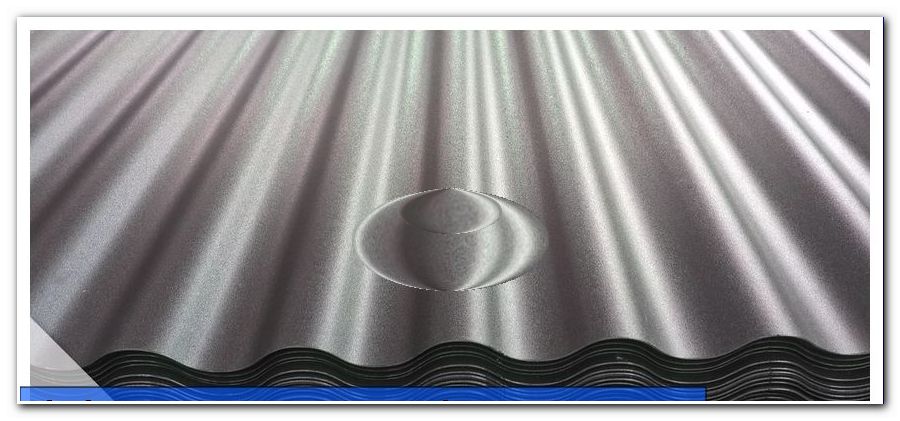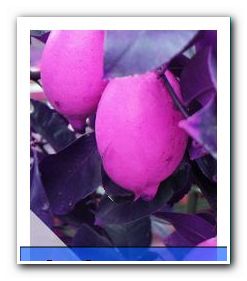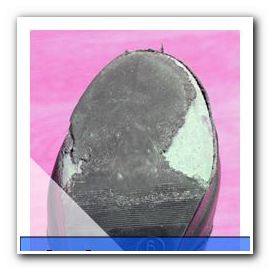The difference between fruits and vegetables - already known?

- Similarities of fruits and vegetables
- Difference between fruits and vegetables
- Distribution of fruit in trade
- Distribution of vegetables in the trade
- Frequently asked questions
Actually, one thinks with this question, that the difference is completely clear. Everyone knows that an apple is fruit and a potato is a vegetable. But what determines which plant belongs to which class ">
What is the category of fruits and vegetables? Is it the look, the taste, that it is consumed raw or cooked? There are many distinctions, but some are also very misleading. Exceptions confirm the rule as always. The best way to see it is not so finicky, which is now fruit and vegetables, otherwise you can get confused quickly. Here we have collected differences and similarities between fruits and vegetables and hope to be able to eliminate uncertainties. Inform yourself!
Short profile fruit
- Most raw edible and hydrous fruits or parts thereof
- Grow on trees and shrubs or perennials
- Rather sweet or sour taste
- High sugar
- Stimulate the taste (due to fruit acid, sugar and flavorings)
- Water usually quite high, calorie rather low
- Contains valuable vitamins and minerals, fruit acids, carbohydrates, cellulose and pectins
- Differentiation according to different criteria
- pome fruit
- stone fruits
- soft fruit
- nuts
- Südfrüchste
- more exotic fruits

Short profile of vegetables
- Collective term for edible plant parts of wild-growing or cultured plants (Wikipedia)
- Depending on the type and variety, vegetables can be consumed raw, boiled or preserved
- Edible, depending on the type and variety, fruits, leaves, stems, tubers or roots
- Vegetables are healthy and low in calories
- High water , low energy , low fat
- High fiber - important for digestion
- Usually one year old, sometimes two years old
- Can be differentiated according to different criteria
- Classification according to
- root vegetable
- cabbage
- Leafy vegetables
- bulb vegetables
- stem vegetables
- fruit vegetables

Tip: Plant parts that are used as vegetables and spices, such as peppers or onions, are only considered vegetables if they form a recognizable main component of the meal.
Similarities of fruits and vegetables
Fruits and vegetables have many differences. Even if you do not want to believe it, they also have a lot in common.
- Both are edible plants, or parts of the plant can be eaten
- Grow on the ground, on shrubs or trees
- Rich in minerals, eg potassium and magnesium
- Both contain numerous vitamins, not just vitamin C, but also E, K, and more.
- Have fiber
- Almost all are low in energy (except seeds and legumes)
Difference between fruits and vegetables
First of all, it has to be said that there is no definition that includes all the fruits and vegetables. There are always a few varieties that do not fit. Maybe that's why there are so many definitions. None covers all and fits everywhere. This is certainly misleading, but who has to know 100% exactly where fruits or vegetables belong ">
There are several characteristics that explain the differences between fruits and vegetables. According to the food definition, it is very simple to differentiate between the fact that fruit is perennial, whereas vegetables carry only once, ie one year, maximum two years.
- Many fruits can be harvested from a fruit tree or shrub for many years.
- This is also possible for plants growing on the ground, such as strawberries.
- Rhubarb is also perennial to harvest and belongs to vegetables.
- Vegetables have to be reseeded every year.
fruit vegetables
For fruits and vegetables, which does not fit into the definitions, an additional category was created, namely the fruit vegetables. It includes tomatoes, aubergines, cucumbers, peppers, melons, pumpkins, legumes okra and zucchini.
Obviously this is not, otherwise rhubarb would not be found in the vegetable shelves of the supermarkets and avocados would not be with the vegetables.
Raw or cooked?
Fruit is consumed raw, if not boiled or processed into jam and the like. Vegetables are usually cooked. Even the term vegetable (from Middle High German) means "cooked porridge" from all kinds of crops. For tomatoes, cucumbers, peppers, and some other vegetables, this description is not quite true, but as I said, exceptions confirm the rule. Kohlrabi is also eaten raw by many people.
To taste
Fruit alone has a pleasant, usually sweet or slightly sour taste, even without preparation, just raw. Vegetables, on the other hand, are flavored with spices and thus enhanced. However, there are also more sour or even bitter fruits and also slightly sweet vegetables.
botany
In botany, the expert calls fruits so that they must have emerged from a fertilized flower of a plant. Only this is fruit. Vegetables, on the other hand, are other plant parts that are edible. According to this definition, however, cucumbers, zucchini and pumpkins are part of the fruit. However, they are annual and not sweet and are therefore considered fruit vegetables. To confuse even the last reader another example. Rhubarb, which is clearly a petiole and therefore a vegetable, is often used as a fruit.
Distribution of fruit in trade
 | pome fruit
|
 | stone fruits Cherry, peach, nectarine, |
 | soft fruit Strawberry, raspberry, blackberry, |
 | nuts Nuts (hazelnut, walnut, Do not belong to the nuts |
 | Classic tropical fruits Pineapple, acerola, pomegranate, banana, guava, persimmon, physalis, kiwi, coconut, lychee, mango, melon, minneola, pawpaw, papaya, passion fruit, star fruit, tamarillo and tamarind |
 | Exotic fruits Acerloa, date, pomegranate, prickly pear, lychee, mango, papaya, |
 | wild fruit Black and red elderberry, blueberry, cranberry, cranberry, ruffberry, mulberry, wolfberry, bladder cherry, crab apple, ornamental apple, wild pear, chokeberry, pear, hawthorn, blackberry, apple rose, potato rose, plum, laurel cherry, wild cherry |
Distribution of vegetables in the trade
Collective term for edible plant parts: leaves, fruits, tubers, stems, roots
As a rule, these come from one- or two-year-old plants 
- root vegetable
- tuber vegetables
- Potato, kohlrabi, horseradish, carrots, parsnips, radishes, radish, beetroot, sweet potato, topinampur
- bulb vegetables
- Onion, pearl onion, shallot, onion, winter onion, wild garlic, garlic, leek
- tuber vegetables
- cabbage
- Cauliflower, broccoli, kale, Brussels sprouts, cabbage, red cabbage, cabbage, Chinese cabbage, Romanesco, savoy cabbage
- Leafy vegetables
- Chicory, Chinese cabbage, oak leaf lettuce, iceberg lettuce, endive, corn salad, garden salad, lettuce, arugula, cut salad
- stem vegetables
- Swiss chard, rhubarb, celery, asparagus
- field vegetables
- Collective term for vegetables grown in the open air
Tip: Dry seeds such as peas, lentils and cereal grains are an exception. They do not count as vegetables and of course not as fruit.
Frequently asked questions
What does the potato belong to ">
According to food dictionary, the potato is a solanaceae and related to eggplant, pepper and tomato. It is not related to the sweet potato. Strictly speaking, the potato does not count as a vegetable but as an agricultural crop. I would count her to the field vegetables. In agriculture, it is referred to as root crop.
What belongs to the fruit vegetable?
Avocado, eggplant, chili, cucumber, pumpkin, okra, pepper, tomato, zucchini and certainly more. Legumes are often included, so beans, peas and lentils.
Text for fast readers
What is the difference between fruits and vegetables?
- Difference is not easy to clarify
- The classification rules often contradict each other
- Numerous distinguishing features
- Also similarities - rich in minerals, vitamins
- Have fiber and almost all are low in energy
differences
- fruit
- perennial plants that can be harvested for years
- Can be eaten raw, but also cooked (jam, juices ...)
- Pleasantly sweetish or slightly sourish taste
- vegetables
- one year, is seeded annually, some biennial
- Is usually cooked
- Is usually upgraded with spices
Definition botany
- Fruits, so only fruit from fertilized flowers
- Vegetables are different parts of plants
- Various divisions in the trade, eg pome fruit, berry fruit, stone fruit, tropical fruits, wild fruit
- Root vegetables, cabbage vegetables, leafy vegetables, stalk vegetables, field vegetables




